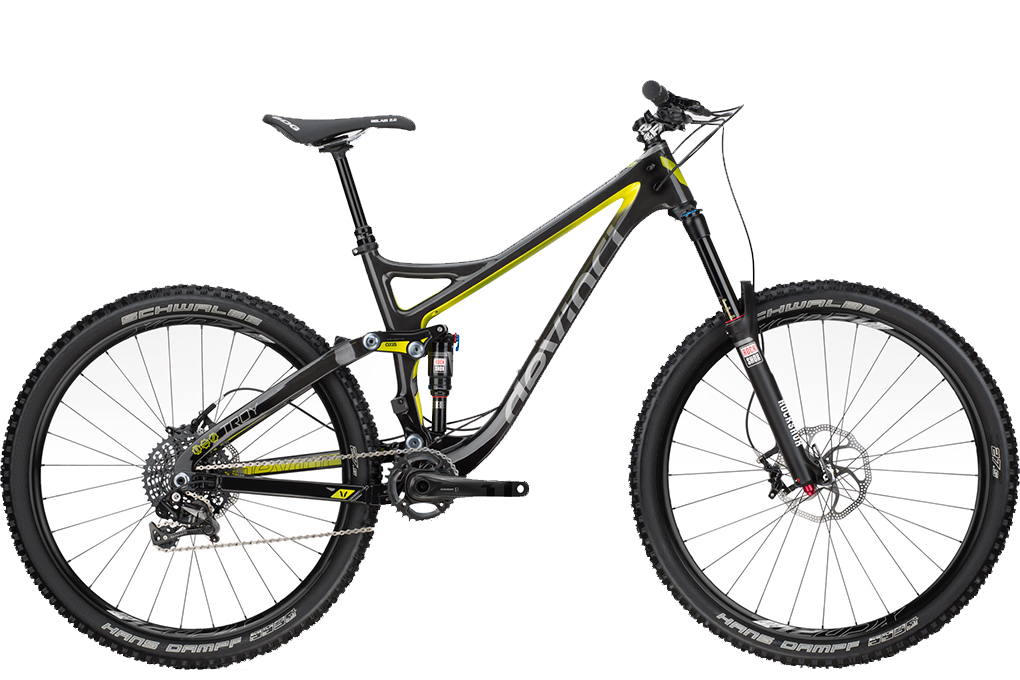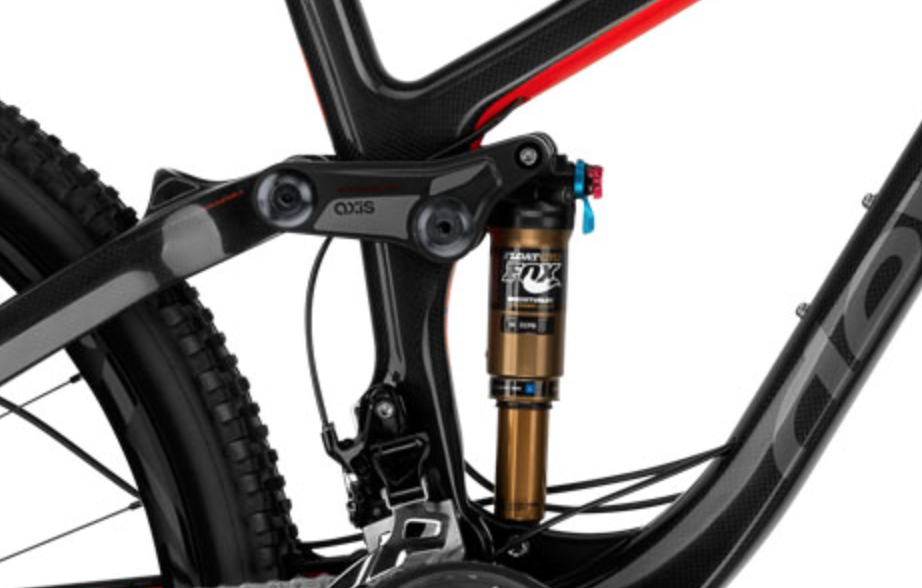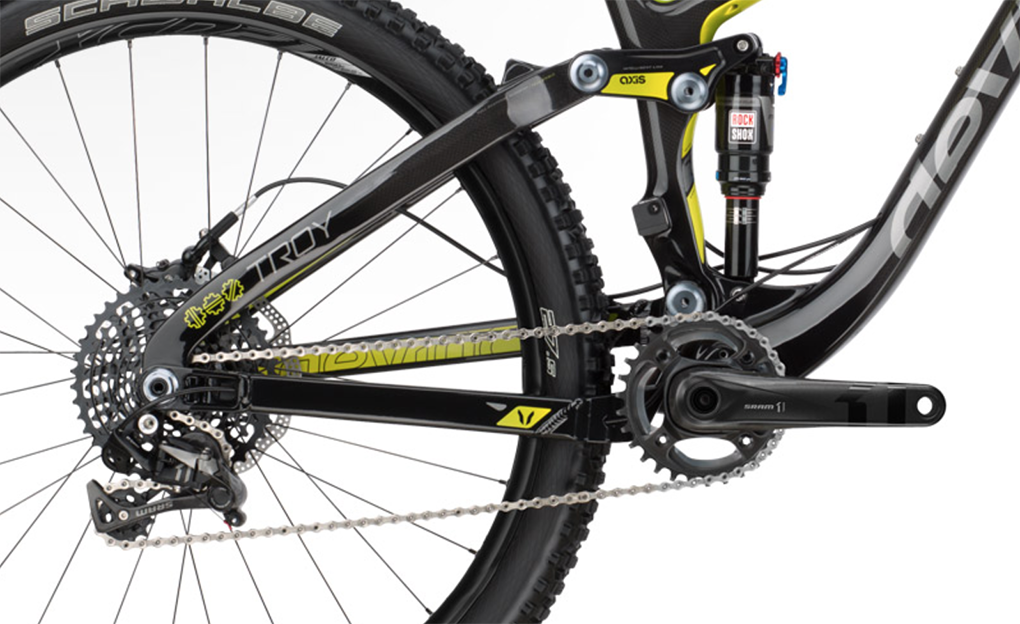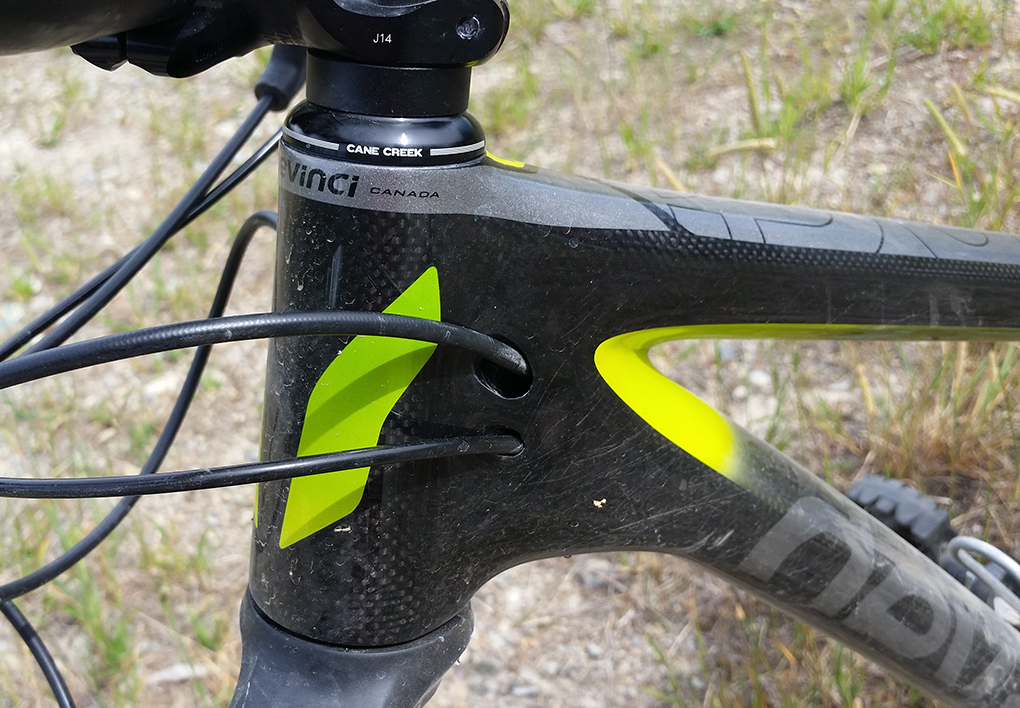
Bike: 2015 Devinci Troy Carbon SX
MSRP: $5,599.00 (as tested)
Wheels: 27.5”
Size Tested: Large
Blister’s Measured Weight: 13.03 kg (28.7 lbs) without pedals
Travel: 140mm
Geometry & Complete Build: Here
Build Overview:
Drivetrain: SRAM X1
Brakes: SRAM Guide R
Fork: RockShox Pike RC 150mm
Shock: Monarch RT3 Debonair
Wheels: 27.5” Jalco rims, Formula hubs
Reviewer Info: 5’9”, 155 lbs.
Duration of Test: ~15 rides
Test Locations: Whitefish, MT; Fernie, BC
FYI…
Devinci has just leaked some early information regarding the 2016 Troy, which sees some incremental changes. While it doesn’t look like the 2016 Troy will render the prior models obsolete, preliminary indications are that Devinci made some fairly minor adjustments and well thought out tweaks. It’s still the same basic bike with a Split Pivot rear end, but there are a few things that I thought could be improved on the 2015 model, all of which seem to be addressed in 2016. We’ll get on the new Troy, but before we all get too excited about a bike that won’t be available until well into the winter, let’s focus first on the current Troy and what it brings to the table…
Intro
The Devinci Troy sits in the middle of Devinci’s full suspension lineup, between the 165mm-travel 27.5” Spartan, and the 110mm-travel 29er Atlas. The 145mm Dixon rounds out that lineup as one of the few holdout trail bikes still rolling on 26 inch wheels.
Like the other bikes in Devinci’s line, the Troy comes in a few different build options, and also has both carbon and aluminum frame choices, with the carbon frame shaving off around .6 lbs.
I’d ridden the Troy at Interbike when it first came out, and found that it did pretty well in rough terrain, but that it could get overwhelmed by bigger hits. So with more time to play around with it recently, I set out to see if my initial impressions held true.
Fit and Geometry
Like the Spartan, the 2015 Troy doesn’t fully embrace the “long reach, short stem” movement. Since I occasionally wished that my Medium Spartan was a bit longer, I opted to test the Troy in a size Large.
Early rumors indicate that the Troy will see some revisions for 2016. It doesn’t look to be a completely different bike, but some tweaks to the linkage and geometry may offer an incremental improvement.
Like several of Devinci’s other bikes, the geometry on the Troy can be adjusted by flipping a chip. On the Troy, those chips are located on the rearward rocker pivot, and they’ll raise or lower the bottom bracket by about 7mm.

That same adjustment also results in a .5° head angle change and relatively minor changes to assorted other measurements like reach and top tube length. I spent the vast majority of my time on the Troy in the low and slack setting, and it’s the ride in that setting I’ll be discussing throughout this review.
Even in a size Large, the Troy’s reach only comes in at 435mm, which on many bikes these days is more in line with a Medium. Similarly, the Large top tube length comes in at 599mm, which again is shorter than some other companies’ Mediums.
Dropping down to a Medium Troy shaves 20mm off of the top tube length and about 18mm off of the reach.
With the stock 60mm stem, my 5’9” frame felt a bit too stretched out on the Large. The bike wasn’t unrideable by any means, but I was too far over the front for my preferences. I dropped down to a 50mm stem, which was the configuration that I used for most of my time on the Troy. If I was to spend more time on the bike, I’d potentially go with an even shorter stem.
(Note: the 2016 Troy looks to be much longer than the 2015 version. The geometry chart that was released by Devinci shows that a 2016 Medium is actually slightly longer in the front end than the 2015 Large—a 2016 Medium has a 440mm reach and a 602mm top tube. Those numbers are definitely at the long end of things, so I presume that the bike will be spec’d with a much shorter stem.)
Like the Spartan, the 2015 Troy sports a fairly low 337mm (13.3”) bottom bracket height. The Troy also gets relatively short chainstays – 430mm (16.9”), which aren’t the shortest in its class, but they’re definitely not long. .
It’s noteworthy that, in low mode, the Troy has a 67° head tube angle, which is a bit slacker than many of the bikes in this travel class. That helps out with stability at speed, which I’ll discuss later on.
The Frame
I tested the carbon version of the Troy, but it’s also available in aluminum. The carbon frame sheds about .3kg (.66lb) according to Devinci’s website (though it’s unclear which size frame they’re weighing) and costs about $500 more than the aluminum version (which, incidentally, is a pretty good deal by bike-industry standards).
On the carbon frame, the only non-carbon pieces are the chainstays and the rocker arm, both of which are aluminum.
The bottom bracket is a BB92 press-fit, with no metal insert in the frame. So far this has worked fine for me, but creaking is always a concern on these types of bottom bracket interfaces.
As with all of Devinci’s full suspension bikes, the rear end is built around the Dave Weagle conceived Split Pivot linkage. The noteworthy element of that linkage is that the rear-most pivots rotate concentrically around the rear axle.
The rest of the linkage is relatively straightforward. The “main” pivot is above and slightly behind the bottom bracket, and the shock is actuated via a rocker arm.

This linkage layout bears some similarities to Trek’s ABP system, which also uses a pivot concentric to the rear axle. There are, however, some differences in the precise placement of the other pivots, which do affect the bike’s ride.
Cable routing on the frame is all internal, and the frame features internal tubing to make routing the cables super easy: you shove the cable in one end, and it pops out at the other.

Devinci also specs the Troy with SRAM’s connectamajig quick connects on both the rear brake and Reverb seatpost, so no bleeding is required after threading those hoses through the frame.
The Troy has one water bottle mount on the top side of the downtube, but it lacks an additional mount on the underside of the downtube. It also lacks any sort of protection for the underside of the downtube, which is always a bit concerning on a carbon frame. I would have liked to see Devinci at least include some sort of rubberized rock guard to help ward off stray projectiles.
The Troy includes ISCG 05 tabs, so you can run a guide if you’re so inclined. And while our Troy was set up 1×11, there is a mount for a front derailleur.
NEXT: The Build, Suspension Setup, Etc.
